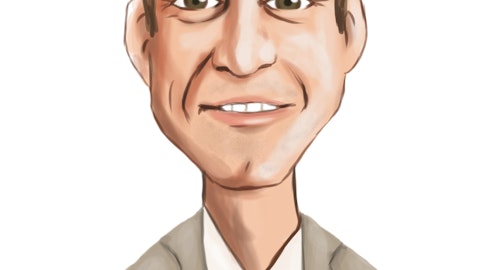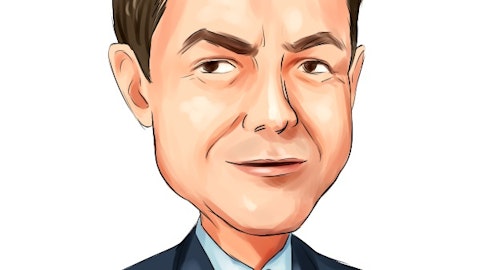Dan Schuller: So, North Carolina, there was a change a couple of years ago that allows for this multiyear rate making. And so this is the first time that we’re in we’re taking advantage of that new construct. Pennsylvania allows for an alternative ratemaking, which one could €“ a company could propose a multiyear. It hasn’t been used any great. We saw one water case where that was proposed, but I think by and large, all of our other states are effectively one increase based either on a historic test year or future or fully projected future test years, but those are the only two places. I would say, we have any ability to think multiyear at this point.
Chris Franklin: Ryan, I would say though, that you’re right to ask about affordability. It’s currently a theme not only across the utility space at and everything else. But it’s even a theme in our boardroom. We’re very focused on affordability for our customers. And that’s why we were the first to get out there with our universal service program in Pennsylvania. That’s why we continue to focus on affordability in all of our states. We think about grants for some of our PFOS, PFOA mitigation work we’re doing, which obviously then is passed directly on to only rate payers, customers, not shareholders. So, big focus on affordability in the industry. And I think that will remain true. These are tough economic times generally. And I think, especially for those that maybe had a little less.
This is an important topic. So, you’ll see regulatory themes and probably different schemes, I should say, that companies will try all at the attempt of being continually more affordable.
Ryan Connors: Got it. Thanks for your time.
Operator: And our next question comes from Travis Miller from Morningstar. Please go ahead.
Travis Miller: Good morning. Thank you. Quick question in terms of, I think, a follow-up really to what you just add to €“ when you take the charge and annual rate adjustments versus base rate cases, how do you think about that balance currently? And what do you think about in terms of the cadence for the base rate cases? Does that make sense to get an idea of annual versus, kind of whatever your run rate, I think, on the base case.
Chris Franklin: The recoverability varies a little bit state-by-state, but the mix in states like Pennsylvania is pretty good. Dan, you know the mix.
Dan Schuller: Yes. I mean we €“ as we think about it, we probably €“ it depends state by state. We have different DSIC or structures. Pennsylvania for water increased rates up to 7.5% between rate cases based on the DSIC. I think the Illinois models 4.5% in any sort of two-year period.
Chris Franklin: North Carolina has one.
Dan Schuller: North Carolina has one. But I think, Travis, maybe to get to, kind of what your question is here. As we think about, say, Pennsylvania, between what we have in the DSIC and what we proposed in a rate case and expect to achieve in that rate case, we’re thinking on the order of 5% per year, but that’s a combination. And what that could mean is, we run a rate case every three years or we could shorten that cadence a little bit to something shorter. But I think in terms of that 5% per year in total, over a rate case period.
Travis Miller: Okay. Yes, that makes sense. No, that’s what I was asking. So, okay. Great. And then a higher-level question. Municipal growth. It seems like when you have the puts and takes over the last few quarters, you’ve been excluding DELCORA somewhere in the 100,000 and correct me if I’m wrong, the number is wrong, but 100,000 or so run rate of pipeline, what’s the macro environment look like? Is there something that’s either holding back the pipeline over the last few quarters and then it could accelerate? Or is this kind of a run rate pipeline that you’d expect?





